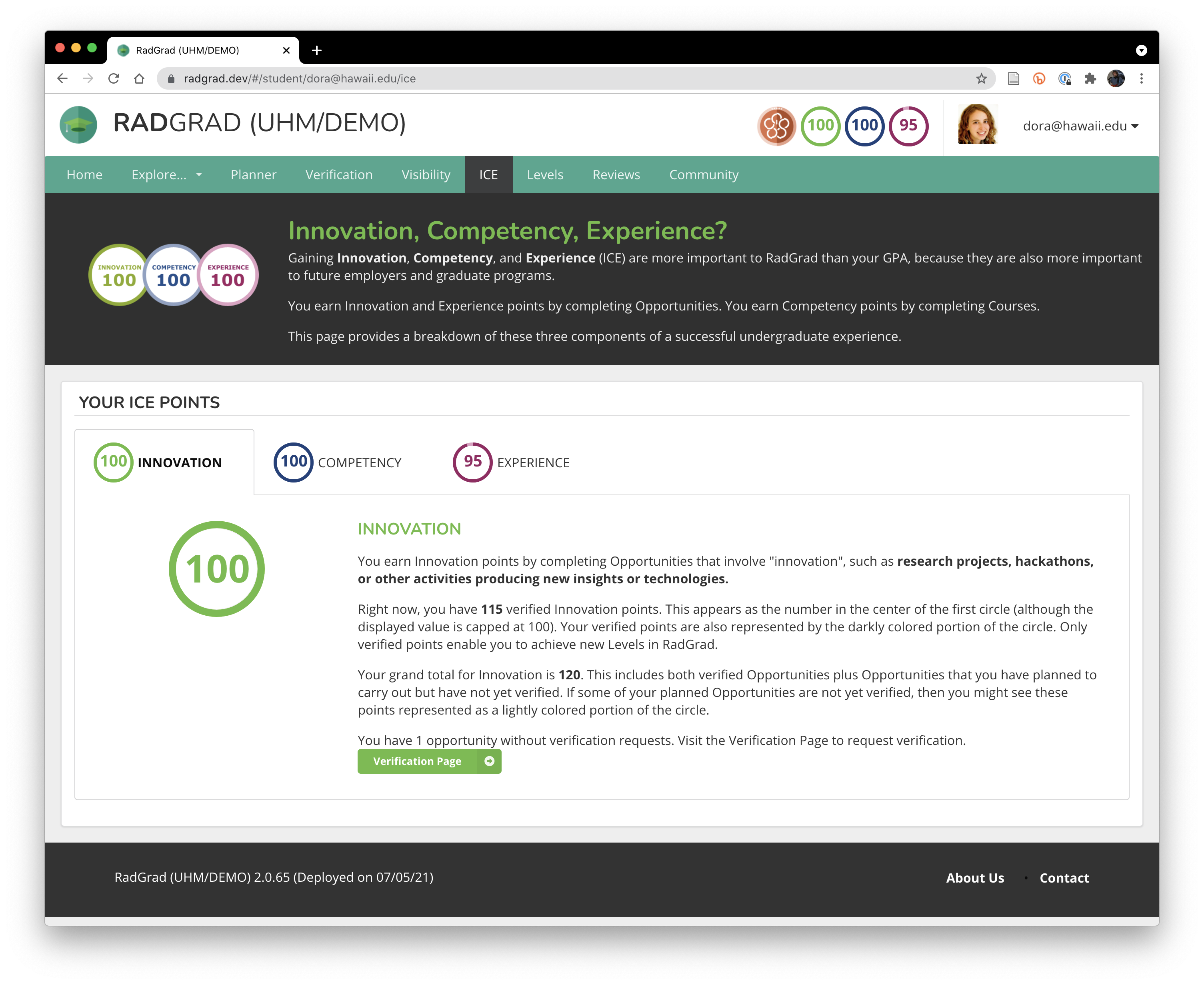ICE: Innovation, Competency, Experience
Universities measure "progress" in an undergraduate degree program through two metrics: credit hours, which is a proxy for "how much" you've learned, and grade point average (GPA), which is a proxy for the "quality" of your learnings.
RadGrad implements a different system for measuring progress involving three separate measures: Innovation, Competency, and Experience (ICE). We designed ICE for two reasons:
The "credit hours" measure excludes, by definition, "extracurricular" activities. In RadGrad, as in the real world, we want disciplinary activities outside the classroom (hackathons, internships, open source development activities, etc.) to have "first class" status along with curricular activities.
The "GPA" measure does not capture other aspects of educational "quality" that are more significant after graduation. Employers and graduate schools want to see evidence, not just of coursework, but that a student is capable of innovation, and that a student has had exposure to "real world" professional experiences.
In RadGrad, you earn "Competency" points by successfully completing courses. You earn Innovation and Experience points by successfully completing (extracurricular) Opportunities.
The number of points earned for a Course or Opportunity is configurable, but completed Courses generally earn about 10 points, and Opportunities generally earn between 5 and 25 points depending upon their complexity and time commitment.
RadGrad provides the ICE Page to help students understand how many ICE points they've earned so far. Here's the page for Dora:

The points earned for curricular and extracurricular activities should be calibrated so that a "well-rounded" student can earn 100 Innovation, 100 Competency, and 100 Experience points by the time they graduate. As you can see, Dora is very near that goal: she needs to earn only 5 more Experience points.
Demo Dive
First, click through the Competency and Experience tabs to see how many points Dora has earned (or planned to earn) in those other categories.
Second, to better understand ICE points, go back to the Opportunity Explorer and use the "Sort by" filter to sort by "Experience" (or "Innovation"). Check out the Details page for some of the initial Opportunities, which are currently configured to provide the highest number of Experience (or Innovation) points. Do you agree with these point assignments? Why or why not?
(Problems with this page? Email radgrad@hawaii.edu to let us know.)
It takes many semesters to earn 100 points in each of these three areas. RadGrad breaks this journey up into six intermediate milestones through the "Levels" game mechanic. Let's look at that next.